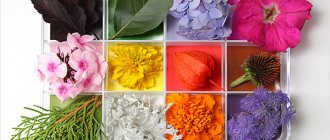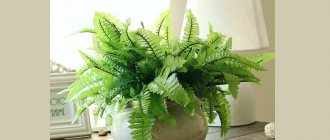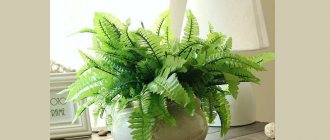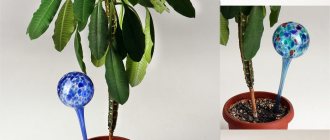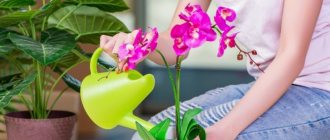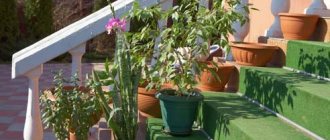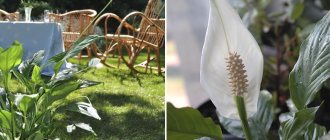It is important to instill in your child a love of nature, including plants, from childhood. And indoor flowers help parents clearly explain to their children about development, care and responsibility. The main thing is to be safe, because some plants have a negative effect on children.
Plants in the Children's Room
Note: For many years, people have grown indoor plants in their homes. Currently, the love for indoor flowers does not fade. Also, many flowers and entire compositions of them can be found in schools, kindergartens, clinics and other institutions.
Why indoor flowers?
Vegetation in a residential building performs several functions at once:
- interior decoration - free-standing flower pots themselves add some freshness to the interior, and well-created compositions make the room more comfortable;
- air filtration (purification) - thanks to the ability of plants to absorb carbon dioxide and release oxygen, the air in the room becomes cleaner. Also, some representatives of the flora are able to purify the air from house dust, which is very important for allergy sufferers;
- disinfection - some types of plants have an antibacterial effect and purify the air from pathogens;
- calming effect - some types of indoor plants have a calming effect;
- medicinal - there are indoor plants (such as aloe, golden mustache, etc.) that have healing properties;
- noise absorption - flower compositions can create special noise insulation in a room. It is especially good to use plants with large large leaves for this;
- distraction - in some cases, indoor flowers can be used to “disguise” defects on the wall, protruding wires, etc.
Children learn to take care of nature
In addition to the above for children, especially older preschool and school age, indoor flowers are needed for education:
- knowledge of the world - study of leaves, shoots, inflorescences, etc.;
- learn to care for plants (plant, water, spray, etc.);
- In the process of caring for plants, the child is instilled with a love of nature and a responsible attitude.
Children and indoor plants
Note: If a family does not have a summer house or a plot of land where the child can be directly “introduced” to nature and caring for plants, then indoor unpretentious flowers in the apartment are an excellent solution.
Conversation “Caring for indoor plants” consultation (preparatory group)
Conversation “Caring for indoor plants”
Objectives: Summarize children’s ideas about caring for indoor plants;
To consolidate knowledge about the basic needs of indoor plants;
Cultivate a desire to care for them.
Activation of vocabulary: Fertilizers, spray, spray, fertilize.
Materials: basin, watering cans with water, rags, brushes, fertilizers. Preliminary work: Observation of the development and growth of plants in a corner of nature; cultivation
cuttings, examining stems and leaves of different plants.
Progress of OOD: Carlson comes to the group of children, greets the children and tells them that he was given indoor flowers for comfort in the house of Freken Bock, but he does not know what the name of which plant is and how to care for them. Carlson asks the children to help her. The teacher invites the children to help Carlson. Children name and show the plants on the table. The teacher draws the children's attention to the fact that plants have different stems.
Educator: Name the plants that we have in our group?
— What do violet and geranium leaves look like? — What does each plant have? (stem, root, leaves, flowers)..
Educator: Why does a plant need roots? Children’s answer (so that the roots grow well) Educator: What is needed for this? What conditions?
Children's answer (pot, water, earth, air). Educator: If you don't water the ground, what will happen? Children's answer (the plants will die) Educator: If you don't loosen the soil, what will happen? Children's answer (the earth will be hard and water will be poorly absorbed into earth) Educator: What are the stem and leaves for? Children's answer (the nutrients necessary for the plant and leaves come through the stem
release oxygen).
Educator: Carlson praises the children because the children know a lot and told her about plants. Educator: Carlson asks how he knows that the plant needs to be watered? Children's answer (the soil is dry to the touch, the light leaves are limp). Educator: Carlson asks what kind of water do you water the flowers? Children's answer (room water, which has been standing since yesterday) Educator: Carlson wants to know why you are loosening the soil? Children's answer (so that water was absorbed well, it was easier for the roots to grow and breathe). Educator: And now the curious Carlson wants to know what you use to loosen the soil? Children’s answer (with sticks, special tools). Educator: What else needs to be done in order for the plants to feel good and looked beautiful? Children's answer (wash them, wipe them with dust).
Educator: How should plants be washed? Children's answer (large leaves are wiped with rags, plants with small leaves are placed in a basin, we cover the ground with oilcloth so as not to wash it away, and water from a large watering can or spray bottle, brush off dust from leaves with a rough surface with brushes).
Physical education minute.
Educator: In order for plants to be beautiful, bloom and grow well, you need not only to care for them, but also to feed them and fertilize them. There are special fertilizers for this. But you can’t pour the powder directly onto the ground; it must first be diluted in water. The plant is fed with this solution once a week after watering so that the fertilizer is better absorbed into the soil. At the end of the lesson, Carlson thanks the children for a good story about the rules of caring for plants, the names of plants, and gives the children emblems depicting indoor plants and leaves.
Outcome of the lesson: At the end of the lesson, the teacher gives each of the children a positive assessment and asks
questions: - What trouble did Carlson come to us with? - What plants were we talking about? — Why do you feed plants? — What kind of land should the fertilizer go to? — Do you think we taught Carlson how to properly care for indoor plants?
Indoor flowers for children's rooms
If you properly organize a green corner in a children's room, it will help enliven the room and make it more comfortable.
Children's room with indoor flowers
When choosing colors for a children's room, you need to pay attention to the following:
- required care - each type of flower requires certain care (some plants are very capricious);
- which side of the world the windows of the room face - if the windows face the south or west, then light-loving plants are suitable for this room; if the windows face north and not much light gets into the room, then shade-loving and shade-tolerant flowers are more suitable for such a room;
- plant size - if the baby’s room is small, then you should not put too large large-leafed plants there, plants in tubs and flowerpots, etc.;
- safety - flowers must be safe for the child. The plants should not have sharp thorns or thorns, and flowering should not be accompanied by a strong aroma.
Important! Before buying indoor flowers for your children's room, you should definitely consult with a florist. The fact is that some types of plants, including those that grow at home, can contain toxic substances and pose a threat to the baby’s health.
What flowers can be in the nursery
Listed below are the main common types of indoor plants that can be placed in a child's room and entrusted to the child to care for them.
Living corner in the children's room
Note: A good option would be to equip a “living corner” in the nursery, where, in addition to plants, you can put a cage with a hamster or parrot, or an aquarium with fish.
Dracaena
This indoor flower purifies the indoor air and absorbs toxins.
Dracaena domestica
Chlorophytum
This flower is also popularly called “spider”. It has bactericidal properties and cleans the air in the room well.
Chlorophytum domestica
Geranium
Eliminates pathogens and has a calming effect.
Homemade geranium
Kalanchoe
This is an unpretentious hypoallergenic plant with bactericidal properties. There are many types of this plant. You can put any type in the children's room.
Kalanchoe laciniata
Violet
A rather unpretentious, but beautifully flowering plant will be an excellent decoration for a child’s room. Girls will especially like blooming violets.
Violet domestica
Lemon Tree
Citrus leaves saturate the air in the room with essential oils; the plant has bactericidal properties. This plant can be grown with a baby from an ordinary lemon seed. You can also plant orange or tangerine seeds. Under good conditions and care, the tree can bloom and even bear fruit.
Lemon tree at home
Tradescantia indoors
This plant is very unpretentious and can even grow in water. Any type of this flower is suitable for a children's room.
Blooming Tradescantia
Spathiphyllum
This flower is also popularly called “women’s happiness.” The plant attracts attention not only with its interesting flowers, which retain their excellent appearance for quite a long time, but also with its wide, numerous leaves.
Woman's happiness
Decembrists
This indoor flower blooms beautifully, as a rule, in winter, which is why it got its name (according to one version).
Photo of the Decembrist
Sansevieria
This plant is also known as “pike tail” and “mother-in-law’s tongue.” This is a very unpretentious houseplant
Sansevieria photo
indoor hibiscus
This plant is also called Chinese rose. Young, small specimens are well suited for a children's room.
Chinese rose
Cypress
Outwardly it resembles a decorative Christmas tree. This plant is able to purify the air in the room, accumulating house dust, bacteria, etc. on its branches.
Cypress photo
Peperomia
Despite the fact that this plant is very unpretentious, not all of its species can be grown indoors.
Peperomia photo
Begonia
Thanks to the essential oils released into the air, begonia is one of the useful indoor flowers for a nursery.
Blooming begonia
What flowers are not allowed?
It is important to note that not all indoor flowers can be placed in a children's room. The following are plants that should not be placed near children.
Dangerous indoor plants
Monstera
Despite the beautiful appearance of the leaves, the sap of the plant is quite poisonous.
House Monstera
Croton
Croton can cause vomiting and burns on the skin. It is especially dangerous if the juice of this plant enters the bloodstream through an open wound.
Croton home
Adenium
This is one of the most poisonous plants.
Adenium photo
Home cactus
The sharp spines of cacti can injure children.
cacti
Euphorbia indoors
The juice of indoor milkweed is quite poisonous.
Spurge
Aglaonema
Despite its beauty, the plant can cause allergies.
Photo of aglaonema
Clivia
A beautiful, but rather poisonous plant.
Photo of clivia
